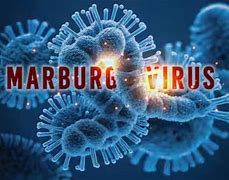Context:
Rwanda has been facing an alarming outbreak of the Marburg virus, which has infected at least 46 individuals and has resulted in 12 deaths.
More on the News
- Around 80% of the infections have affected healthcare workers, posing a severe threat to Rwanda’s healthcare system, which has only 1,500 doctors for a population of over 13 million.
- Last year, the disease was reported in Tanzania’s north-west Kagera region, Ghana and Equatorial Guinea.
About Marburg virus disease (MVD)
- Marburg virus disease (MVD), earlier known as Marburg haemorrhagic fever, is a severe and often fatal haemorrhagic fever caused by the Marburg virus (MARV).
- It belongs to the filovirus family, which also includes the Ebola virus. Both diseases are clinically similar with high fatality rates.
- The virus was first identified in 1967 during simultaneous outbreaks in Marburg and Frankfurt, Germany, and Belgrade, Serbia.
- The fatality rate ranges from 24% to 88%, depending on the virus strain and the level of care provided.
Transmission:
- The Rousettus fruit bat (specifically, the Egyptian fruit bat) is believed to be the natural host of the Marburg virus.
- However, African green monkeys imported from Uganda were the source of the first human infection.
According to the World Health Organization (WHO), the virus can also spread through– - Direct contact with the blood or bodily fluids (such as vomit, urine, or saliva) of an infected person.
- Indirect contact through contaminated surfaces and materials, such as bedding or clothing.
Symptoms:
- The symptoms of Marburg virus disease appear after an incubation period of 2 to 21 days.
- Initial symptoms include high fever, severe headache, muscle ache, severe watery diarrhoea, abdominal pain and cramping, and vomiting.
- Soon many patients develop haemorrhagic symptoms (bleeding from various parts of the body, including gums, digestive system, and vagina).
- Severe blood loss leads to death, often between 8 to 9 days after symptoms begin.
Diagnosis & Treatment:
- Diagnosing MVD is challenging as its symptoms are similar to other diseases like malaria or typhoid.
- However, it can be confirmed through laboratory testing of blood and other samples, which is risky due to the extreme biohazard posed by the virus.
- Currently, there are no approved vaccines or specific treatments for MVD.
- However, according to WHO, supportive care (rehydration with oral or intravenous fluids) and treatment of specific symptoms, improve survival.
- Experimental vaccines and treatments are being developed currently, with US-based Sabin Vaccine Institute providing Rwanda with 700 doses of its experimental Marburg vaccine.
Also Read:
New cancer therapy target could help patients overcome resistant to current treatments

